Measles vaccine provides protection against measles. A single dose provides immunity for most, and a second dose typically ensures immunity for nearly everyone. High vaccination rates (above 92%) within a population prevent outbreaks, but outbreaks can recur if vaccination rates decline. The vaccine's effectiveness is long-lasting, though it's unclear if effectiveness diminishes over time. The vaccine can also provide protection if administered within a few days of exposure to the measles virus.
1954: Enders Shares Nobel Prize
John Franklin Enders, who had shared the 1954 Nobel Prize in Medicine for work on the polio virus.
1960: First Trial of Live Attenuated Measles Vaccine
In 1960, the first trial of a live attenuated measles vaccine was undertaken by the British paediatrician David Morley in a village near Ilesha, Nigeria.
October 1962: Larger Measles Vaccine Trial in New York City
In October 1962, a larger trial was undertaken in New York City with the assistance of the WHO. The trial confirmed that the "further attenuated" vaccine was superior to the Edmonston B vaccine, and caused significantly fewer instances of fever and diarrhea.
1963: Introduction of Measles Vaccines in the United States
Following the introduction of two measles vaccines in 1963, reported cases in the United States fell from 3-4 million with 400-500 deaths, to tens of thousands per year. Both an inactivated and a live attenuated vaccine (Edmonston B strain) were licensed for use.
1963: Enders Develops Measles Vaccine
In 1963, Enders developed a measles vaccine by attenuation through cultured chicken embryo fibroblasts of the material isolated by Peebles.
1963: First Measles Vaccine Introduced
In 1963, the Edmonston-B strain of measles virus was developed into a vaccine by John Enders and colleagues and licensed in the United States.
1968: Improved Measles Vaccine Developed
In 1968, Maurice Hilleman and colleagues developed an improved, weaker measles vaccine that began distribution and became the only measles vaccine used in the United States.
1971: Increased Vaccine Uptake Following Outbreaks
Following outbreaks in 1971, there was increasing uptake of the measles vaccine.
1971: MMR Vaccine Developed
In 1971, Maurice Hilleman at Merck & Co. developed the MMR vaccine, which vaccinates against measles, mumps and rubella in a single shot followed by a booster. One form is called "Attenuvax".
1977: Increased Vaccine Uptake Following Outbreaks
Following outbreaks in 1977, there was increasing uptake of the measles vaccine.
1990: Renewed Push for Vaccination
In 1990, an outbreak of almost 30,000 measles cases led to a renewed push for vaccination and the addition of a second vaccine dose to the recommended schedule.
1997: Low Measles Cases Reported
From 1997 to 2013, no more than 220 cases were reported in any year in the United States, and the disease was believed to be no longer endemic.
1998: Publication of Fraudulent Lancet Paper
In 1998, Andrew Wakefield et al. published a now retracted and fraudulent "The Lancet" paper linking the MMR vaccine to autism, leading to a decline in vaccination rates.
1999: WHO and UNICEF Strategy
From 1999 to 2004 a strategy led by the WHO and UNICEF led to improvements in measles vaccination coverage.
2000: Measles Vaccination Averted Deaths
According to a World Health Organization report, measles vaccination averted 57 million deaths between 2000 and 2022.
2000: Measles Eliminated from the U.S.
Measles was declared eliminated from the U.S. in 2000, however, high vaccination rates are still needed to prevent outbreaks.
2004: WHO and UNICEF Strategy
From 1999 to 2004 a strategy led by the WHO and UNICEF led to improvements in measles vaccination coverage that averted an estimated 1.4 million measles deaths worldwide.
2005: Measles Outbreak in the U.S.
In 2005, 66 cases of measles were reported in the U.S., slightly over half were attributable to one unvaccinated teenager who became infected during a visit to Romania, resulting in an outbreak that infected 34 people.
October 2009: Merck Discontinues Standalone Attenuvax Production
Following ACIP recommendations, Merck decided not to resume production of Attenuvax as standalone vaccine on 21 October 2009.
2013: Low Measles Cases Reported
From 1997 to 2013, no more than 220 cases were reported in any year in the United States, and the disease was believed to be no longer endemic.
2018: Global Vaccination Coverage
As of 2018, about 86% of children globally had received at least one dose of the measles vaccine.
2019: Concerns Raised About Unvaccinated Students
According to a 2019 Los Angeles Times article, concerns were raised about unvaccinated students contributing to the large number of measles outbreaks.
2019: Centers for Disease Control and Prevention Statement
When addressing the major U.S. measles outbreak in 2019, the Centers for Disease Control and Prevention stated that outbreaks are more likely in areas with pockets of unvaccinated residents.
2021: Two-Dose Immunization
In 2021, at least 183 countries included two doses of the measles vaccine in their routine immunization schedules.
2022: Measles Vaccine Uptake Impacts Income
A 2022 study in the American Economic Journal found that the measles vaccine uptake led to increases in income of 1.1 percent and positive effects on employment due to greater productivity by those who were vaccinated.
2022: Measles Vaccination Averted Deaths
According to a World Health Organization report, measles vaccination averted 57 million deaths between 2000 and 2022.
February 2025: Agency Declined to Publicize Expert Assessment
During the U.S. outbreak beginning in February 2025, the agency declined to publicize their updated expert assessment and forecasting model, thereby choosing not to alert clinicians and the public of being at specific risk in areas with low immunization rates.
2025: Kennedy Sends MMR Vaccine to Texas
On 28 February, during the 2025 Southwest US measles outbreak, Robert F. Kennedy Jr announced that he would be sending 2,000 doses of the MMR vaccine to Texas along with other resources.
Mentioned in this timeline
The United States of America is a federal republic located...
Nigeria is a West African nation the most populous in...
Africa is the second-largest and second-most populous continent comprising of...
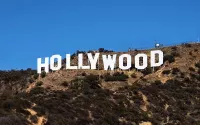
Los Angeles is the most populous city in California and...
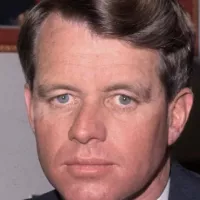
Robert F Kennedy RFK was a prominent American politician and...
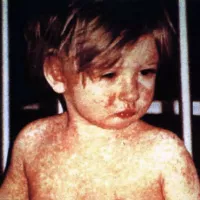
Measles also known as morbilli or rubeola is a highly...
Trending

15 days ago Ryan Gosling's Star Wars: Starfighter avoids Skywalker Saga themes with new composer and changes.
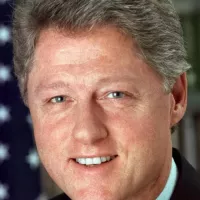
Bill Clinton the nd U S President - served as Arkansas's Attorney General - and Governor - - A Democrat...
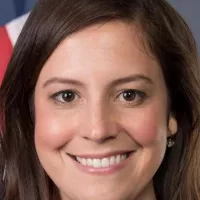
8 months ago Protests Erupt at Elise Stefanik's Saratoga County GOP Fundraiser in Halfmoon
5 months ago TJ Watt becomes highest-paid non-QB after extension; JJ Watt reacts hilariously.

2 months ago Upstart's Q3 Earnings: Mixed Results, Soft Q4 Guidance, and Stock Slides After Announcement.

7 months ago Wrexham Targets Premier League Stars Amid Championship Push Transfer Rumors
Popular

Candace Owens is an American conservative political commentator and author...

Tucker Carlson is an American conservative political commentator known for...

XXXTentacion born Jahseh Dwayne Ricardo Onfroy was a controversial yet...

Ilhan Omar is an American politician currently serving as the...

Kashyap Pramod Patel is an American lawyer who became the...
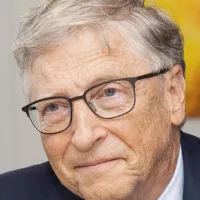
Bill Gates an American businessman and philanthropist revolutionized personal computing...
